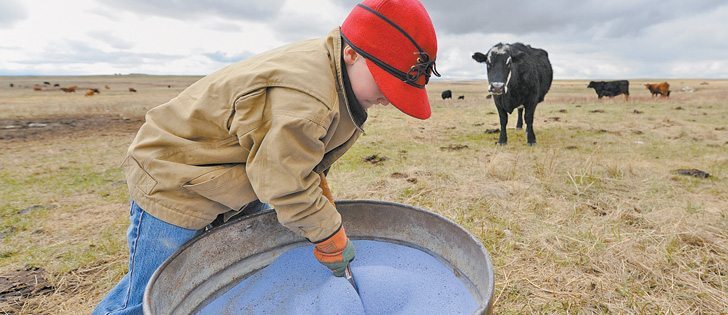When producers bring cattle with a supposed case of foot rot to Chris Clark, the veterinarian says it’s almost always something worse.
Foot rot is a common cause of lameness, but the infection between the animal’s toes should improve after a few days of treatment with an antibiotic, he told producers at the Farm Animal Council of Saskatchewan’s stock persons school in Saskatoon.
“Nobody would bring me a bull if they hadn’t tried treating it at least twice and so by the time it gets here, I am 100 percent sure certain it doesn’t have foot rot,” said Clark of the University of Saskatchewan’s Western College of Veterinary Medicine.
Read Also

Breaking down successful winter feeding into six steps
It’s that time of year when it is important to start planning for a cow herd’s winter feeding program. Here are six steps I think are necessary to consider when getting your feed tested.
He said producers should be mindful of the signs of foot rot if a bull goes lame: swelling near the coronary band and an accompanying smell.
“When an animal has foot rot it smells like death,” he said.
If they diagnose the problem as foot rot, producers need to treat it with antibiotics.
If left untreated, foot rot can work its way into the joint at the bottom of the leg, which requires the toe to be amputated or the animal culled.
It’s not foot rot if it doesn’t get better with antibiotics, he added.
The producer should then seek assistance. Abscesses, sole ulcers, sand cracks and corns top the list of common causes for lameness.
There’s no definitive way to prevent these conditions, he said, but preventive measures can be taken through good stewardship.
For example, foot trimming can help manage most cases.
“If you’ve got an animal whose foot is misshapen in any way, shape or form, foot trimming, I would argue, is an investment,” he said.
It’s a common problem in bulls, whose hind legs bear great weight, and can lead to bruising and then sole ulcers.
Clark recommends producers examine bulls’ feet six weeks before they’re to be used, around the time the breeding soundness examination is performed. By trimming before breeding, the animal has a greater chance of getting through the season without problems arising.
“We used to get a lot of guys bring their bulls in on their way to the pasture and want their feet tidied up,” said Clark. “That puts an awful lot of pressure on me because I may be good, but I’m not perfect.”
If trimming is required, that six-week period gives the animal enough time to grow a new sole and recover if an abscess is discovered that needs to be drained.
“Worst case scenario, you’ve got time to buy a new bull,” said Clark.
“If you bring him to me on your way to pasture, all I’m going to do is a really minor tidy up.”















